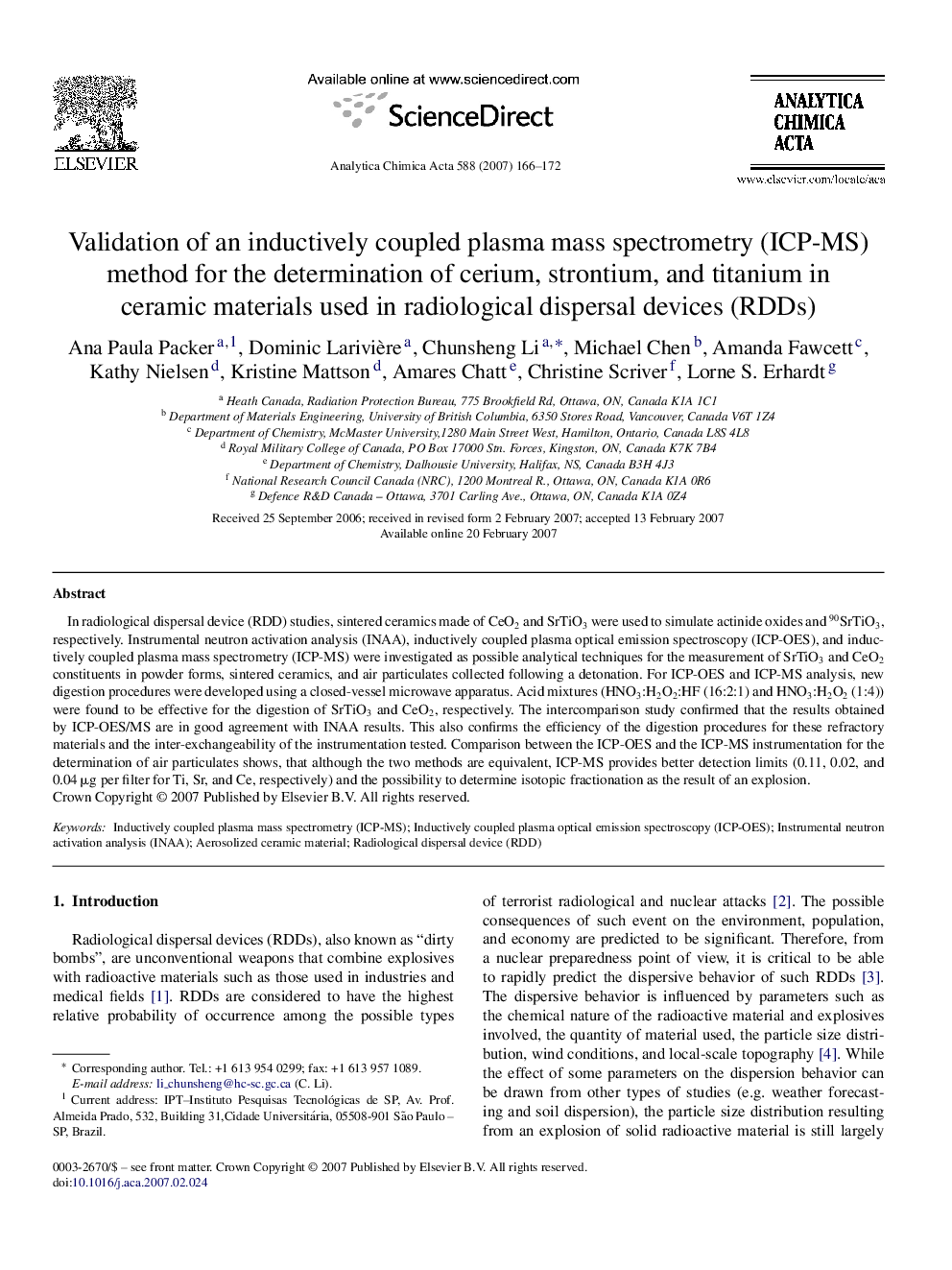| Article ID | Journal | Published Year | Pages | File Type |
|---|---|---|---|---|
| 1170775 | Analytica Chimica Acta | 2007 | 7 Pages |
In radiological dispersal device (RDD) studies, sintered ceramics made of CeO2 and SrTiO3 were used to simulate actinide oxides and 90SrTiO3, respectively. Instrumental neutron activation analysis (INAA), inductively coupled plasma optical emission spectroscopy (ICP-OES), and inductively coupled plasma mass spectrometry (ICP-MS) were investigated as possible analytical techniques for the measurement of SrTiO3 and CeO2 constituents in powder forms, sintered ceramics, and air particulates collected following a detonation. For ICP-OES and ICP-MS analysis, new digestion procedures were developed using a closed-vessel microwave apparatus. Acid mixtures (HNO3:H2O2:HF (16:2:1) and HNO3:H2O2 (1:4)) were found to be effective for the digestion of SrTiO3 and CeO2, respectively. The intercomparison study confirmed that the results obtained by ICP-OES/MS are in good agreement with INAA results. This also confirms the efficiency of the digestion procedures for these refractory materials and the inter-exchangeability of the instrumentation tested. Comparison between the ICP-OES and the ICP-MS instrumentation for the determination of air particulates shows, that although the two methods are equivalent, ICP-MS provides better detection limits (0.11, 0.02, and 0.04 μg per filter for Ti, Sr, and Ce, respectively) and the possibility to determine isotopic fractionation as the result of an explosion.
